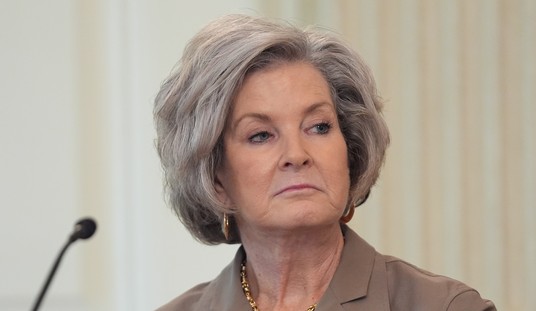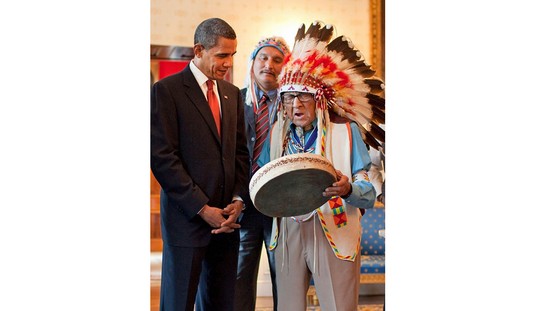
It should come as no surprise by now that the RedState Department of History staff is a huge fan of all things nostalgic and while watching streaming video after work this week we settled on some of our favorite old movies.
Often, those movies involve the dance era of the 1930s, 40s and 50s. And that’s a good thing because today’s anniversary fits right into that sweet spot.
On this date in 1933, Fred Astaire’s first film was released. Entitled “Dancing Lady“, it was quite a gathering of talent. Clark Gable and Joan Crawford starred in the movie which also featured Astaire’s film debut and appearances by Ted Healy and his Stooges, who later became known to film history as Moe, Larry and Curly.
Astaire was born Frederick Austerlitz in Nebraska in 1899. He started in show business at age 5, and formed a productive dance partnership with his sister Adele, who at first was considered the more talented of the two siblings. She left the act to get married, and Astaire turned to the silver screen.
His initial screen test at RKO pictures, according to legend, didn’t go well. His initial evaluation reportedly read “Can’t act, can’t sing. Balding. Can dance a little.”
However, Astaire’s incredible talent soon won the day and he was cast in “Dancing Lady,” with Crawford as his first screen dance partner.
Astaire had been loaned to MGM for that first picture, which was a commercial success. Back at RKO, the studio paired him up with a young actress named Ginger Rogers – and Astaire was reluctant. He said he had already been part of a partner act and didn’t want to be part of another one.
But the screen chemistry between Astaire and Rogers was tremendous and the pair made nine pictures together for RKO – six of which became, at the time, the studio’s highest-earning films.
Astaire was also responsible for revolutionizing dance on film. You may have noticed in the “Dancing Lady” cut that the dance sequence is shot relatively tightly with numerous cuts in the style made popular by director Busby Berkeley. Astaire soon insisted that these cuts be removed in later films and the entire sequence be shot using only four to eight cuts with the dancer’s entire body visible at all times. Especially during his mandated solo dances (which he called his “sock solos”), Astaire changed the way film related to dance.
When asked why he was so insistent, Astaire told one of his directors that “either the camera will dance or I will. And I’m dancing.”
You can see the style in other Astaire classics, including the famous “Dancing on the Ceiling” scene from 1951’s “Royal Wedding”, in which Astaire’s character falls in love with Winston Churchill’s real-life daughter Sarah.
Astaire soon became known as a meticulous rehearser, so well trained in his muscle memory that he could repeat dances weeks or months after they had been shot. He could even make inanimate objects look good, as he did again in “Royal Wedding” when he danced with a clothes horse.
While his partnership with Rogers was the most celebrated, Astaire had a special place for Eleanor Powell in his list of favorites. This wonderful scene from the Broadway Melody of 1940 showed Powell’s skills as the best female tap performer of her generation and perhaps of all time.
But what did Astaire think about Rogers? The woman who did everything “backwards and in high heels” started out quite inexperienced but in the master’s words, got better as she went along:
“Ginger had never danced with a partner before Flying Down to Rio. She faked it an awful lot. She couldn’t tap and she couldn’t do this and that…but Ginger had style and talent and improved as she went along. She got so that after a while everyone else who danced with me looked wrong.”
To elaborate further, we turn to Time magazine film critic Richard Schickel:
“Rogers was outstanding among Astaire’s partners not because she was superior to others as a dancer, but because, as a skilled, intuitive actress, she was cagey enough to realize that acting did not stop when dancing began … the reason so many women have fantasized about dancing with Fred Astaire is that Ginger Rogers conveyed the impression that dancing with him is the most thrilling experience imaginable.”
One of those “other” people who danced with Astaire was his friend and longtime rival Gene Kelly. The two performed in Ziegfeld Follies “The Babbitt and the Bromide” with words and lyrics by Astaire’s childhood friends George and Ira Gershwin. Kelly said afterward that Astaire “will be the only modern dancer anyone will ever remember.”
In later life Astaire was a huge admirer of Michael Jackson’s dance skills, telling the King of Pop just before he passed away that “I didn’t want to leave this world without knowing who my descendant was.” And in some ways, their styles are transferable.
Astaire retired from dance filmmaking in the late 1950s but continued to act in movies until 1981. That said, even at age 71, Astaire showed that he still possessed his skills by breaking into dance at the Academy Awards.
Fred Astaire appeared in 42 movies and innumerable television broadcasts before passing away in 1988 from pneumonia. But his legacy lives on.
Happy Sunday and enjoy today’s open thread!














Join the conversation as a VIP Member